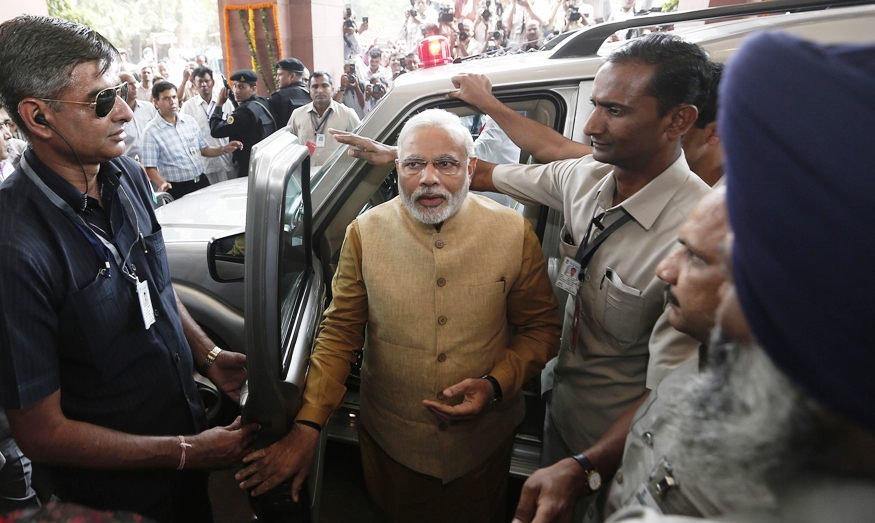
NEW DELHI:
It was a bitterly cold Indian Republic Day in 2001. Most people in Gujarat were glued to their TV screens, watching the armed forces’ parade. At 8:40am, a massive temblor, measuring 7.9 on the Richter scale, decimated the entire Kutch area. Nearly 7,900 villages were flattened and 25,000 souls perished. Since the octogenarian chief minister, Keshubhai Patel, would have been unable to tackle the catastrophe, Narendra Modi was brought in to replace him on October 7, 2001.
Modi’s first task was to prepare the ruling Bharatiya Janata Party and the government for assembly elections scheduled in December 2002. Even then, Modi was an ardent advocate of privatisation. He was the first BJP chief minister to privatise ports and, when he was criticised for that, his argument was: “The people of Gujarat are very enterprising and they want minimum government.”
He also allowed industrial estates to have power plants without applying for permission from the state. It was during this period that Gujarat became one of the few Indian states to demand a nuclear power plant of its own.
But then Godhra happened
A passenger train full of Hindu Kar Sevaks (volunteers for a religious cause) returning from a pilgrimage in Ayodhya was set on fire at the Godhra railway station on February 27, 2002. Fifty-eight people were burnt to death, most of them charred beyond recognition. It was alleged that a Muslim crowd angered by the provocative slogans of the Kar Sevaks firebombed the train.
As Godhra has a large Muslim population, it became the epicentre of the communal carnage that engulfed the entire Gujarat state.
Much later, then prime minister Atal Bihari Vajpayee, also from BJP, was to remind Modi that as chief minister, he had the duty to rule (raj dharma). But Hindu anger was allowed to kill, rape and pillage Muslims under the police watch. There were reports of ‘controlled riots’ – but they soon went out of control. More than 2,000 Muslim men, women and children were hacked, stabbed and burnt to death.
The world watched and said they were only seeing what they already knew: India was ungovernable and not a country to be trusted with the arsenal of power, especially nuclear weapons that the BJP had tested for India. Post-Godhra events were described as ethnic cleansing and genocide and the European Union, Britain and the US said Modi was not welcome in their countries.
Modi’s actions did not have unreserved domestic backing either. Senior BJP leader LK Advani called the Godhra riots a ‘blackspot’ in the National Democratic Alliance’s regime.
An attack on the Akshardham temple in Gujarat resulted in more religious polarisation.
In December 2002, the BJP increased its strength in the Gujarat assembly. Gujarati Hindus had a new hero in Narendra Modi, and thus began his second term as chief minister.
Take two
This time, Modi resolved to do something different: the accent was not on Hindutva or Hinduism; it was on Gujarat.
It was during this period that the Rajiv Gandhi Institute of Contemporary Studies ranked Gujarat among India’s best-administered states on an index of economic freedom. It could be argued that given the state’s history of entrepreneurship, this had little to do with Modi’s efforts.
Nevertheless, there was sufficient anecdotal evidence that corruption had significantly decreased in the state. The results of the 2007 assembly elections were a slightly different from before. In 2002, he had 125 seats, this time Modi bagged 117 out of 182 seats, becoming chief minister for the third time.
Final countdown
As the Western world mulled over continuing to treat Modi as a perpetrator of genocide, and thus denying him a visa, it was conscious of the fact that it was losing the game to Southeast Asian countries, which were treating Gujarat as an investment destination.
The next challenge was to win the 2013 assembly elections as convincingly as the ones in 2007. The night before election results were declared Modi used the rare respite to hold his last cabinet meeting and bid goodbye to the secretariat staff. But he also held a 90-minute meeting to review schemes to provide drinking water in Gujarat. Modi wrapped up his third tenure and got ready for the fourth.
He had nothing to fear as things were looking up. A huge agri-business summit had already been held in Gujarat, bringing in more investment, more prosperity.
Modi ruled the state for 13 years and he tried to prove that he was more business than politics. Whether he sticks to this policy while holding the highest political office in India remains to be seen.
Published in The Express Tribune, May 27th, 2014.
COMMENTS (19)
Comments are moderated and generally will be posted if they are on-topic and not abusive.
For more information, please see our Comments FAQ

























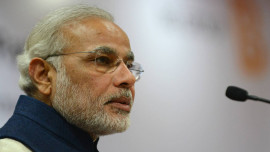

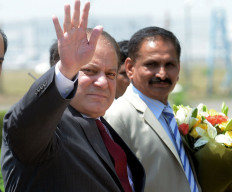


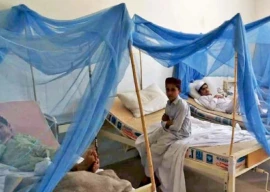


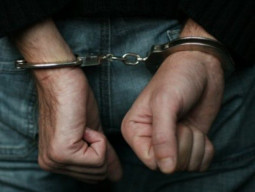




















@The Chauhan: Thank you Sir for your enlightening post. Unless context demands it I almost never use "Muslim" or "Christian" prefixes for invaders/colonisers but prefer Afghan, Turk,Mughal, Portuguese, British etc but here I was merely reproducing in italics the comment of others. Yours is a very illuminating post & interesting information. Code of Honour matters far more than the way of worship. I liked the part about Maharana Pratap's statue too. Sadly Hindutvavaadis have purloined many a great icon of Indian history for their selfish needs. The real heroes like Pratap & Bhamashah fought for principles & for the downtrodden like the Bhils of Mewar. An English James Tod understood Rajputs & Rajputana better than some of these politicians. Look forward to more such informative posts from you.
@Rakib: Modi is a predicament for it ........1) we need him to work 2)but we need to vigilante about him & his associates.....
"The Muslim invader " thing is highly incorrect & needs to be fought against firmly........So majority of Indian muslims who are the same Indo-aryan & dravidian people are invaders..... In Saddha-Chaurasi area of Ghaziabad 144 Rajput villages exist out of which 3 belong are Muslim-Rajputs. All those Rajputs are of Tomar & Gehlot clans .When the NDTV reporter (Ravish Kumar) asked the sarpanch of one of these villages about the presence of Rana Pratap's statue (a hero whose status has been hijacked by Hindutvadis) , he proudly pointed out that he was a Gehlot Rajput & Pratap was a clansmen......And btw all Muslim & Hindu Rajuts pointed at their ex-Jagirdar status
Similarly Khanzadas of Bihar happen to be Muslim Bhumihar Brahmins
Similarly the Pasmanda muslims & Dalit hindus happened to be the same lower caste people whom our ancestors sadly exploited..
There one realises that the image of a Muslim being a highly Persianised individual with proud PersoArabic origin carved inside the heads of a middle class hindu is only a mirage........ Thus North Indian of Muslims , Hindus & Sikhs happen to be of same ancestory & share a history of 4000 years including the period when all of them were Buddhists & Jains...............
Thus it has to "Central Asian & Arab invation " & not "Muslim invation"
At the time of riots Modi was in office only for about 6 months. He was inexperienced. In addition the all the different bodies constituted to find facts and the supreme court of India has exonerated him. USA giving him visa is not material. 1.2 billion Indians have found him not guilty.
@Aamir - Toronto: ( Muslims leaders did not adopt the policy of dived & rule, it was the Britishers who created this “fitna”.)
Nobody did anything of that kind. "We" divided, "They" ruled. Right since Alex of Macedonia...
@Aamir - Toronto: "@ekon……Muslims leaders did not adopt the policy of dived & rule, it was the Britishers who created this “fitna”." What was Aurangzeb's imposition of jiziya on Hindus, if not "divide and rule"? Muslims are doing same exact things in Iraq today where they are purging christian compatriots out of Iraq. @water bottle: "And it’s dishonest journalism like this that made me vote for Modi." Didn't you say at another place that you voted for Congress?
@rakib @aamir religious tax to visit their shrines were imposed by British? Read how qutub minar was made at what cost, read what was there in ayodya before Babur brought that down and built a mosque. That's no conspiracy but pure history carved on it.
@ekon......Muslims leaders did not adopt the policy of dived & rule, it was the Britishers who created this "fitna".
@ekon: Exactly. The invaders too had Modi in mind, if the logic of @pcv is to be respected & his style of conspiracies have to be believed. May be Guj earthquake was caused by enemies!. Let's keep finding alibis instead of making a simple, honest admission that under the watch of CM-Modi law & order failed in parts of Gujarat between 28 Feb/2nd March 2002.
@Rakib How about you see this way.. If there wouldn't have been Muslim coming to invade Indian sub continent, today everybody would have been at peace?
It is amusing that there have been more articles in ET on Modi than on Nawaz Sharif and Zardari combined.
@pcv: Actually it was planned well in advance by enemies of Modi, that is,conspiracy since AD1528 by General Baqi of Babur's army. No Babri mosque-no demolition-no train pax-no-fire-no Newton's law...
The anti Modi cottage industry is shifting its base to Pakistan
Ghodra burning was planned on the day of Narendra Modis first budget as chief minister to tarnish him and divert attention as his success in rebuilding gujarat in October to December was nothing short of a miracle from the disaster of earth quake. As a new Chief minister he did everything possible to control the riots. The left liberals media who have enjoyed a great life with corrupt money still find it difficult to understand that their 12 year anti-modi campaign is completely exposed. Thanks to the great man MODI and the social media and educated youth of INDI.
And it's dishonest journalism like this that made me vote for Modi.
Thanks Adidi, Seema, Aakar Patel and others.
alleged ? it was proved and criminals awarded punishment. It was proved that it that burning was pre planned.
He was refused visa then, not banned under "violation of religious freedom in his state". Not genocide, correct the statement. Secondly negligence to control Muslim mobs of Hindu train burning and the Hindu-Muslim mob riots later that followed can't be put on his shoulders. He was inefficient he dint anticipate it. How many riots have happened in the world including pakistan, never have unable to suspect and stop the riots from happening blamed on CM and ministers but mob people..
@lalai and a lower caste.
This time we have so many woman ministers in cabinet. This is woman empowerment. NAMO all the way. :)
A great leader with vision and even greater capacity to realize that vision. Kudos to Indian democracy and establishment, which allows a tea staller to become the PM .